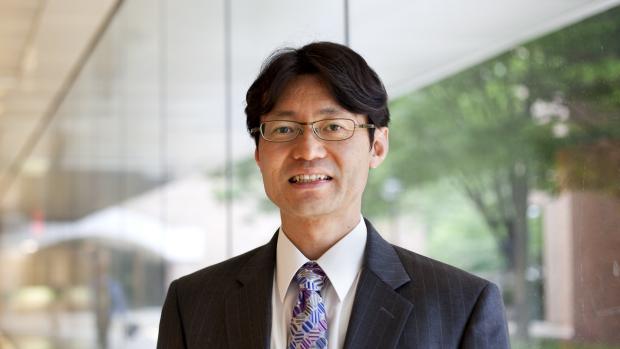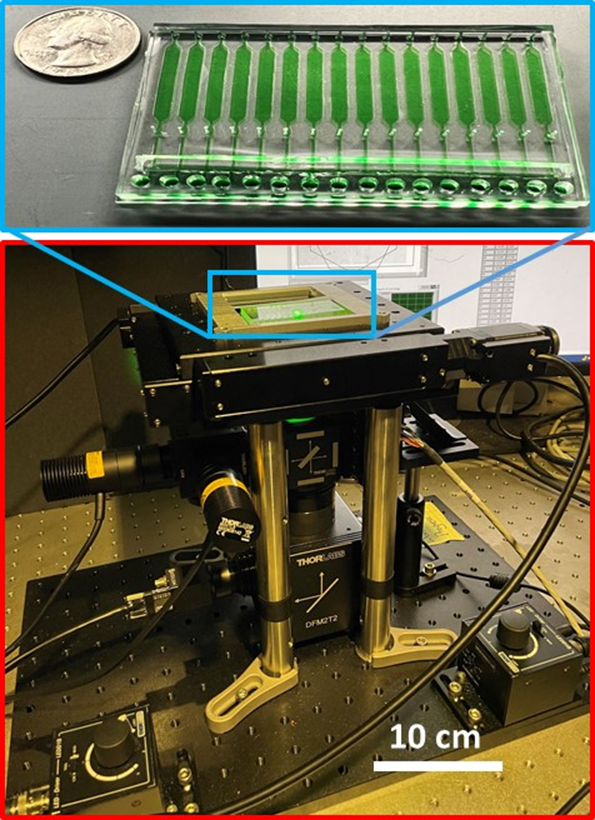Meet Katsuo Kurabayashi, incoming chair of Department of Mechanical and Aerospace Engineering
Determined to change the field’s image with an ambitious plan for the future

NYU Tandon has long been at the leading edge of thought leadership and innovation in key areas of engineering — from pioneering new principles of materials and polymer science to establishing the foundational technologies of wireless communications to introducing cybersecurity as an area of academic study. What each of these visionary developments had in common was a willingness to think beyond traditional siloed definitions of engineering and create unconventional relationships across disciplines in order to create new solutions to the pressing issues of the time.
This June, NYU Tandon will build on that tradition by welcoming a new Department of Mechanical and Aerospace Engineering chair with deep interdisciplinary experience and optimistic predictions for the future of the field and its world-changing potential.
Katsuo Kurabayashi — who was a Professor of Mechanical Engineering and Associate Department Chair for Graduate Education at the University of Michigan, Ann Arbor, before arriving in Brooklyn — is looking forward to continuing his own multifaceted research while working to encourage collaboration of all sorts, just the sort of boundary-breaking approach valued at Tandon.
“Mechanical principles are involved in almost any phenomenon you can think of — from the control of stem cells to how sound waves travel through the air,” he says. “But even though mechanical engineering is everywhere, one discipline alone cannot solve every problem. If we’re going to address the issues facing the planet, it’s going to take an all-hands-on-deck attitude that breaks down departmental silos.”
When he learned of the opportunity to join NYU Tandon, he was struck by the school’s lack of those siloes and Dean Jelena Kovačević’s strong belief that Tandon researchers must reach out to colleagues in other departments and even other institutions in order to tackle complex, multifaceted issues.
“Tandon is rightfully proud of its individual departments, but it’s also proud of the ways in which faculty members with different knowledge bases and skill sets come together to conduct exciting work at the intersections where they can collaborate to make an impact,” he explains. “Take mechanical engineers: we are now collaborating with everyone from medical clinicians to urban planners and even participating in areas you might not expect, such as digital media, since working with technologies like motion capture and virtual reality involves mechanical applications.”
He continues, “At Tandon, mechanical engineering students learn to be equally comfortable at a digital manufacturing facility, nanotech cleanroom, or wet bench and to grasp biology, chemistry, materials science, or data science as they apply to the research problems that capture their imaginations. They’re considering areas like wireless communications, cybersecurity, and sustainability that require multidisciplinary perspective–and recognizing the contributions they might make to any of them.”
Kurabayashi’s own research brings together core scientific knowledge and engineering design principles at the micro- and nanometer scales to impact wireless communications, healthcare, life sciences, and environmental monitoring, among other sectors. His translational work–research that “translates” directly from lab bench to practical, clinical application–is driven by an understanding of the mechanical behaviors of miniaturized materials, device structures, biomolecules, and cells and their interactions with fluids.
Among the innovations for which he is best known is a miniaturized, high-speed, cell-encapsulation droplet sorting instrument that uniquely integrates a small fluidic channel suspending a single-profile flow of droplets and laser optical waveguides on a chip platform — providing a significant advancement to microfluidic droplet sorting technology. The invention was applied to “directed evolution” — a protein engineering method that mimics the process of natural selection — and allowed Kurabayashi and his collaborators to discover new enzymes that produce a side-effect-free anti-inflammatory drug with record-breaking purity, 700 times higher than that of naturally existing ones.

More recently, he and his team have also developed several new biochip devices that enable the rapid diagnosis and treatment of seriously ill patients: the devices make it possible to precisely determine subtle variations in a person’s immune status by measuring intercellular communication mediator proteins called “cytokines” in real-time, with up to 1000-fold reductions in testing time and required sample volume, as compared to conventional clinical lab testing techniques. The biochips have been successfully implemented by physicians treating patients with cancer, acute respiratory distress syndrome, COVID-19, and Crohn’s disease, among other applications.
Kurabayashi plans to bring that same spirit of innovation to the classroom. “One idea I have is to employ haptic suits that can transfer sensation from virtual reality to a human body through electric impulses, to facilitate the experiential learning of students in lab courses,” he says. “That would enable students from both NYU and NYU Abu Dhabi campuses to synchronously work together on lab projects. The development of VR/haptic suit classroom technology could even be an intriguing future research topic in man-machine interface as well. With the creative use of emerging digital technologies, I envision future classroom experiences becoming increasingly engaging, exciting, instructive, and fun for our students.”
He also hopes to ensure that the mechanical engineering classroom of the future is increasingly diverse, and he welcomes the opportunity to support Tandon’s mission of creating an inclusive and equitable environment. “The Industrial Revolution-era image of the burly, male mechanical engineer hoisting heavy machinery is a thing of the past,” he explains. “The field is open now to anyone of any gender, background, or specific area of interest.”
“We are delighted to welcome Katsuo to Brooklyn and excited to see him make his own mark on one of our foundational departments,” says Dean Jelena Kovačević. “His vision and mission perfectly dovetail with what we seek to accomplish here at Tandon, and I have no doubt that he will be an invaluable member of our school community.”
Outgoing chair Kurt Becker adds, “Katsuo’s broad-ranging research experience and commitment to student success will be indispensable assets in his new role. I am confident that I am leaving the department in the finest hands and that its stature will only increase in the worlds of mechanical engineering and higher education.”





